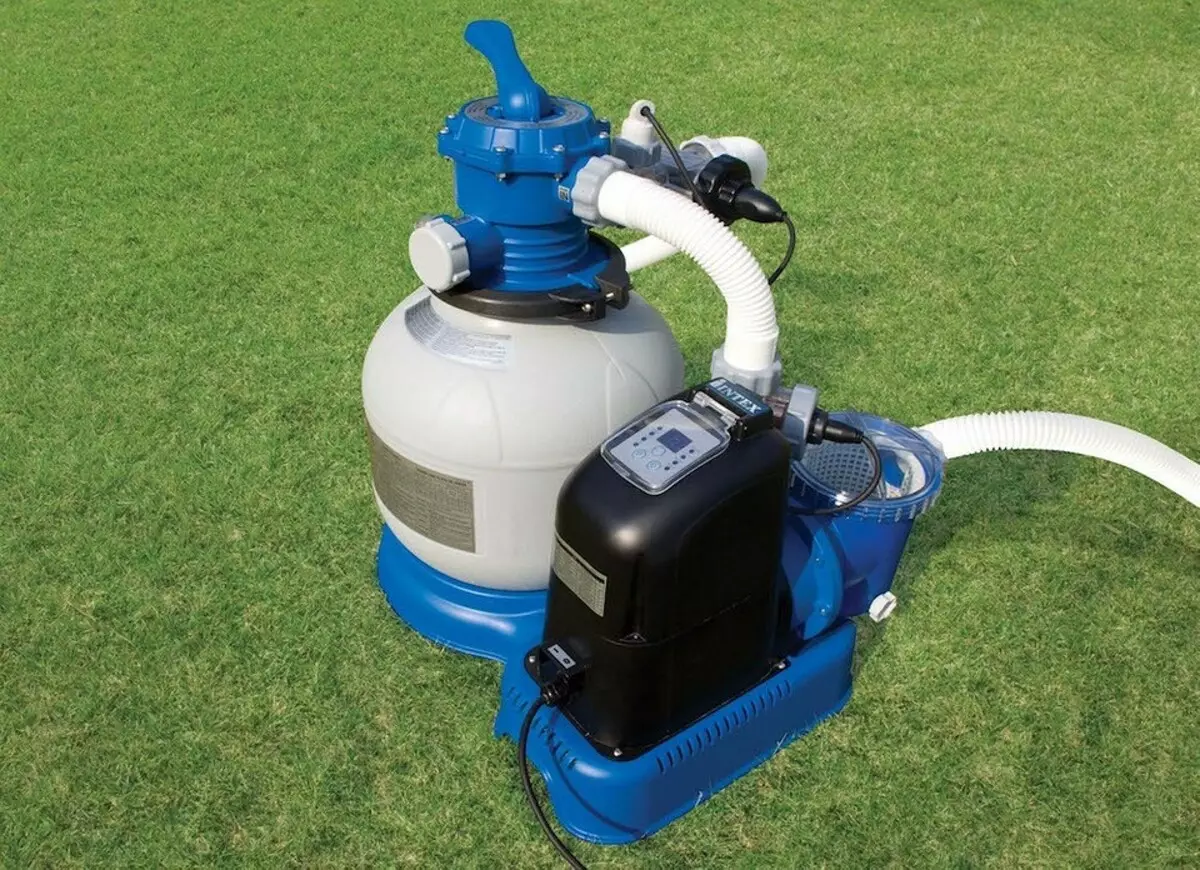We tell how to choose a filtering installation, preparations for chemical cleaning and the salt electrolysis can help.
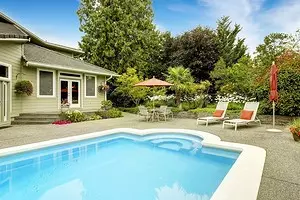
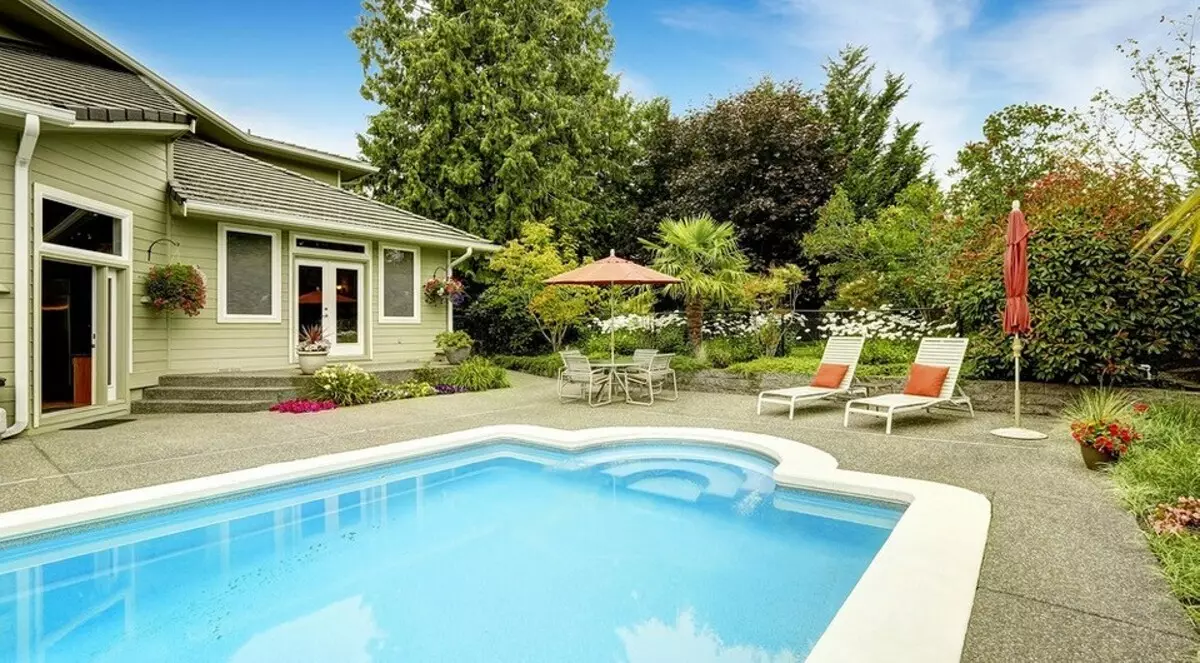
The care of the pool involves filtering water from mechanical impurities, mechanical cleaning of the walls and the bottom, as well as chemical disinfection and the struggle with the development of algae.
Simple ways to care for the pool
- Filtration
- Chemical cleaning
- Salt electrolysis
1 filtration
A complex of care measures for the pool implies water filtering.
Before filling the wall of the bowl, the drug should be treated from algae, and when filling (at the initial stage), it is necessary to try to relete the PVC material folds as carefully as possible - in the future it will facilitate the cleaning of the bottom.
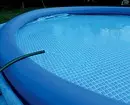
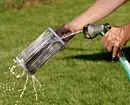
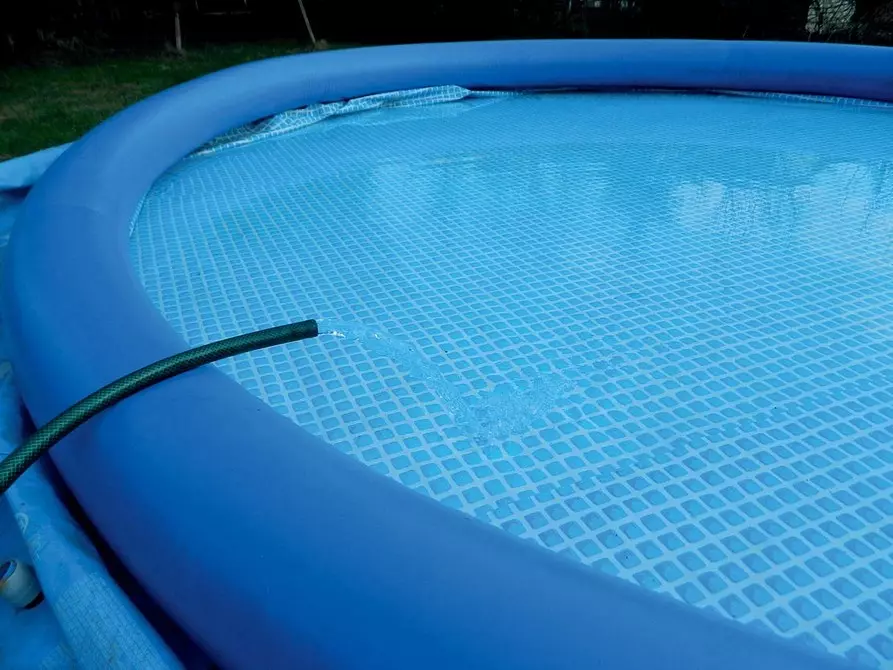
If the pool is filled from the artesian well, it usually does not need to pre-filter; With an excess of iron, a chemical demetallizer (Akvademetal, etc.) can be deposited. Disinfectants are added as soon as water warms up to 18 ° C, algicides - only in the height of the summer heat.
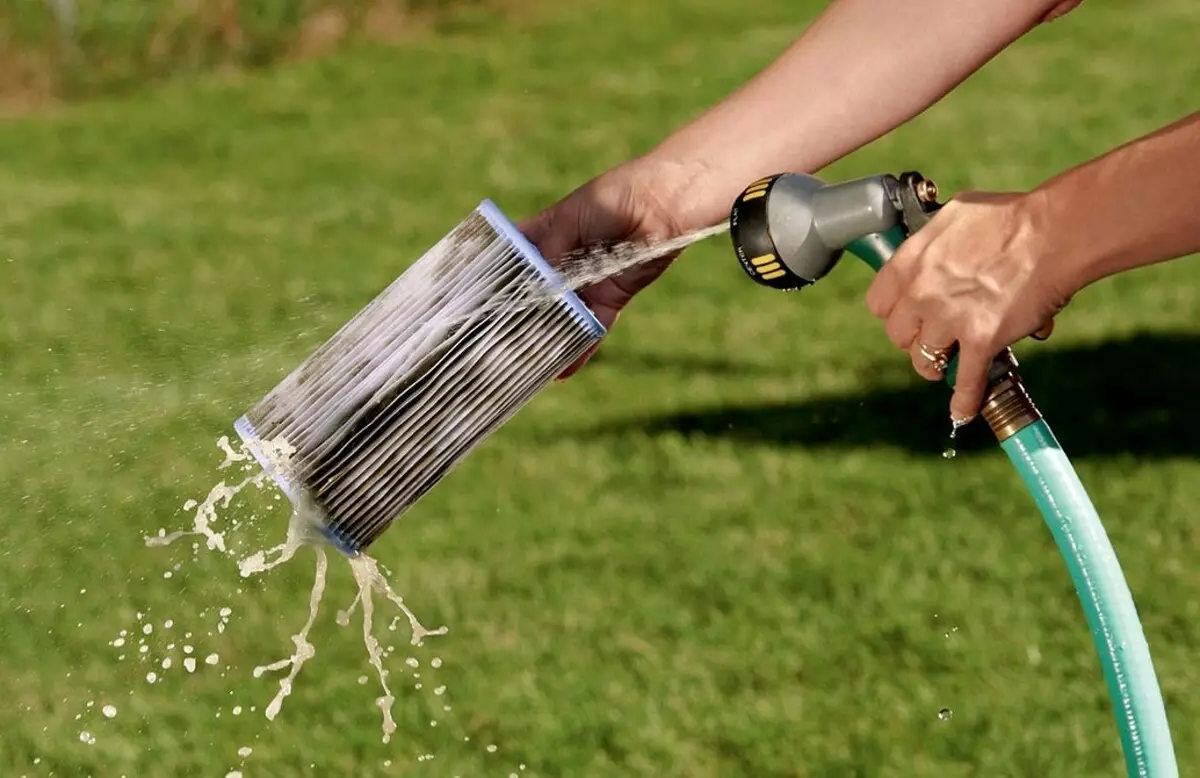
After the impact processing, carefully follow the filter state. The fibrous cartridge at this time has to rinse 2 "-3 times a day, sand every day.
The package almost always includes a filtering installation on the basis of the electroproma, but it is not always enough for it. According to sanitary standards, it is necessary to provide a three-time turnover of water during the day. In practice, the pump capacity (in L / h) should be at least 1/2 from the volume of the bowl (for example, for the bowl of 15 m3, it is necessary to purchase a capacity of about 8 thousand l / h) - then during the day, two filter will cope even with Strong pollution (but only if you have a percussion chlorination).
During the absence of the dacha, close the pool with a lid or a bedspread. It protects water from air pollution carried by air, and slow down the growth of algae. Alas, the day the lid prevents the warming of water, but it will have to accept it. The lid for the pool serves just a year or two, but it is relatively inexpensive.
If the standard device does not have the necessary productivity, it makes sense to immediately purchase more powerful. For the pool with a volume of less than 20 m3, the installation of the cartridge type is suitable. The filter must be flushed every 4-6 hours of the pump. One pair of cartridges is enough for the season. Pools The volume of more than 20 m3 needs to be equipped with a sand filter installation.
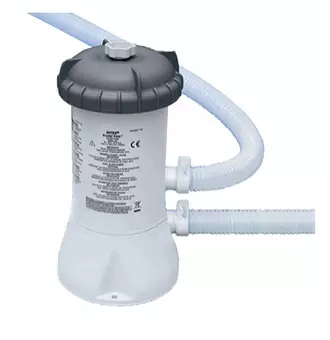
Intex 28604 Filter Pump
By performance, the sand filter significantly exceeds the cartridge, providing more subtle cleaning; Once in 7-14 days, sand needs inverse flushing for 2-3 hours. Water on filtration can be taken either from the surface (skimmer principle), or from a depth of 30-60 cm. In the first case, fast cleaning from dust, pollen, leaves and fallen insects; In the second - a slightly more efficient struggle with the weigon (including algae who died under the influence of chemicals), but to collect garbage from the surface you have to use a mesh net.
When the pool is open, a smoke (superficial) method of filtering is more efficient. But periodically it is necessary to include and the mode with the deep water fence, which helps reduce the amount of suspended pollution.
The most difficult thing to clean the bottom of the pool. For this purpose, special water vacuum cleaners are sold. The most effective devices transmitting water through sand or cartridge, and brushes with a bag of a trap are almost useless, as small dirt particles easily pass through the fabric of the bag. You can use a brush to the bottom of the bottom to which the filtering installation hose is connected.
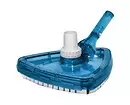
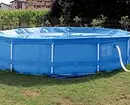
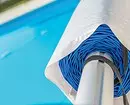
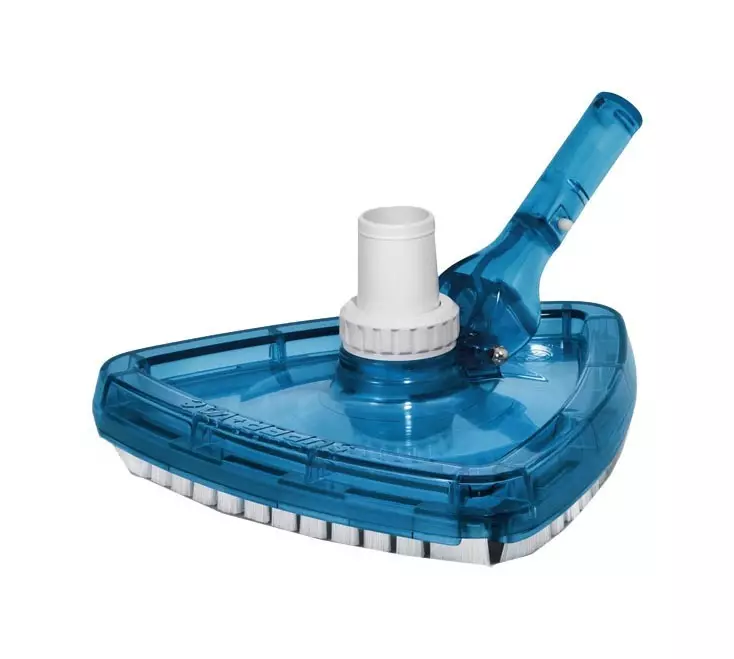
The underwater vacuum cleaner connecting to the surface pump or filter installation is well struggling with the dirt and dead algae.
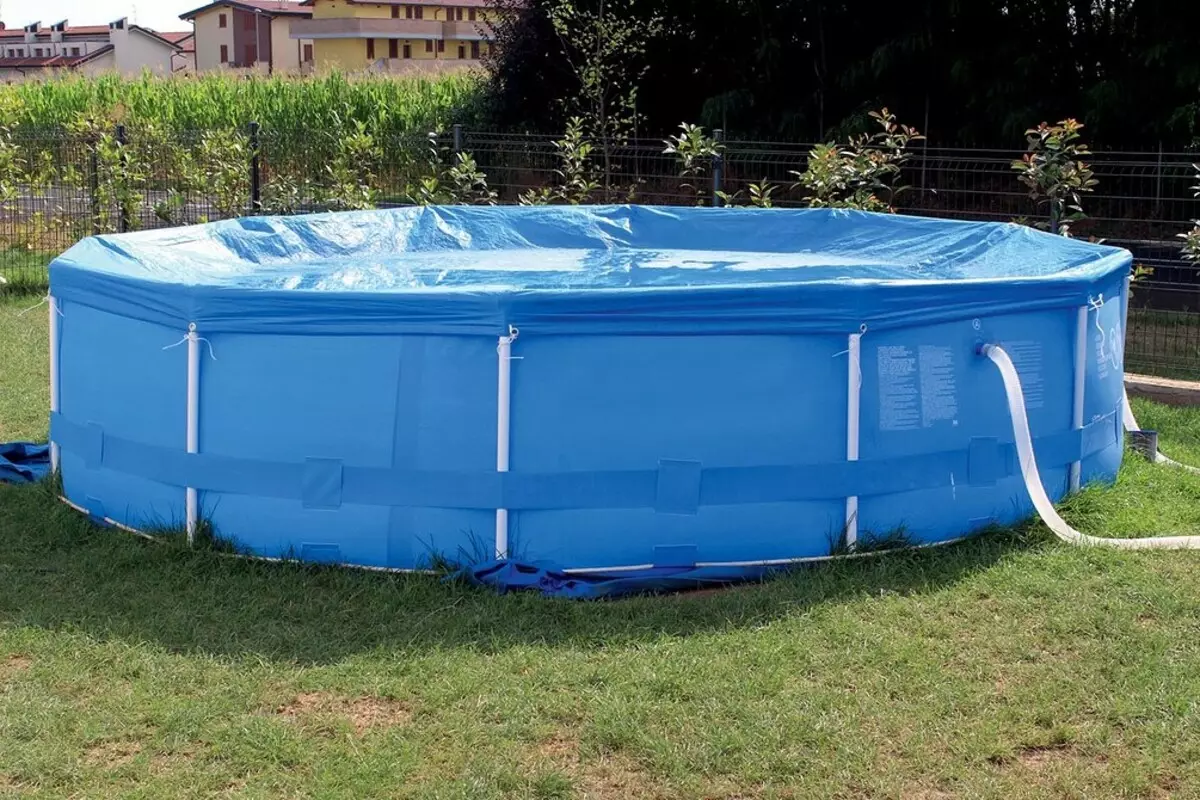
Most of the prefabricated pools are equipped with a cap from PVC or propylene film. This accessory can be purchased separately.
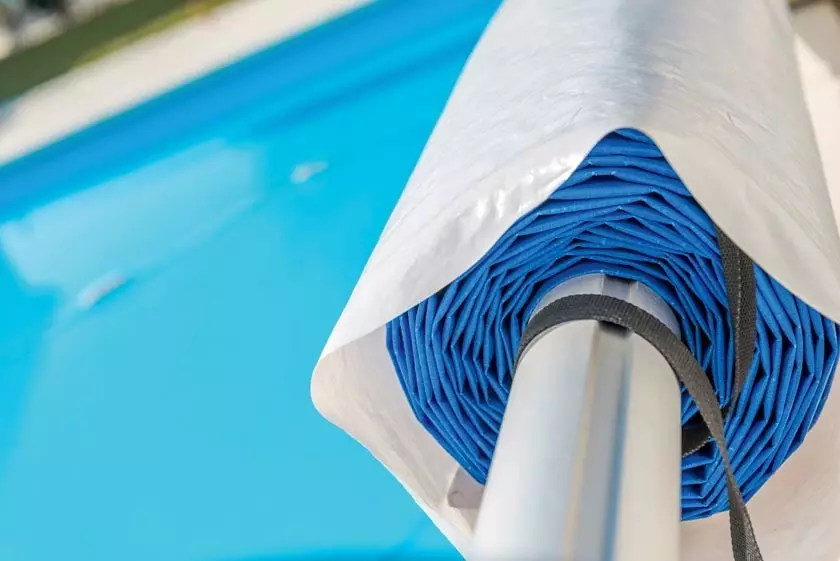
Convenient and durable rolled non-touch covers: they are easily removed and rarely rushes.
2. Chemicals to care for the pool
The main drugs are always two - for disinfection and to combat algae. At the same time, they strengthen each other's action. Applying only one tool, for example, "chloritex" (without making Algitin), you will soon see that the water began to be green.
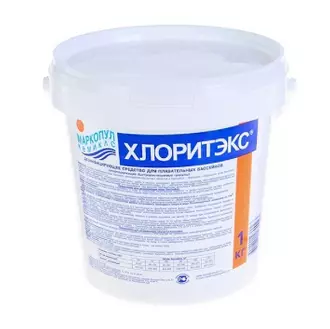
Granules for the pool of Marcopoul Kemiks Chloecex
For disinfection it is convenient to use preparations in tablets and a special dispenser (another option - to pre-dissolve the means in the bucket). Decide which drugs you will use - chlorine or oxygen. Oxygen is somewhat more expensive, it is less effective (their action briefly, therefore, adding tools will have more often) and cause a change in the color of iron water, if it is not previously made a demetallizer. But oxygen does not irritate the skin and mucous membranes, there is no smell. Complex preparations (for example, "Chloroxon") according to the properties occupy an intermediate position between chlorine and oxygen.
The most accessible in the price of chlorine-containing disinfectors ("Chloriclar", "Longaphor", "Chlorateks", "Chlorokson", etc.). They are effective against many bacteria and algae dispute. However, the chlorine has a lot of flaws: it has an unpleasant sharp smell, dries the skin, irritates the mucous eye, sometimes causes foam formation. In addition, chlorine-containing drugs do not act on some persistent (and very dangerous) bacteria, so specialists are recommended to additionally contribute to potassium permanganate (manganese) from the calculation of approximately 1 g by 0.5 m3.
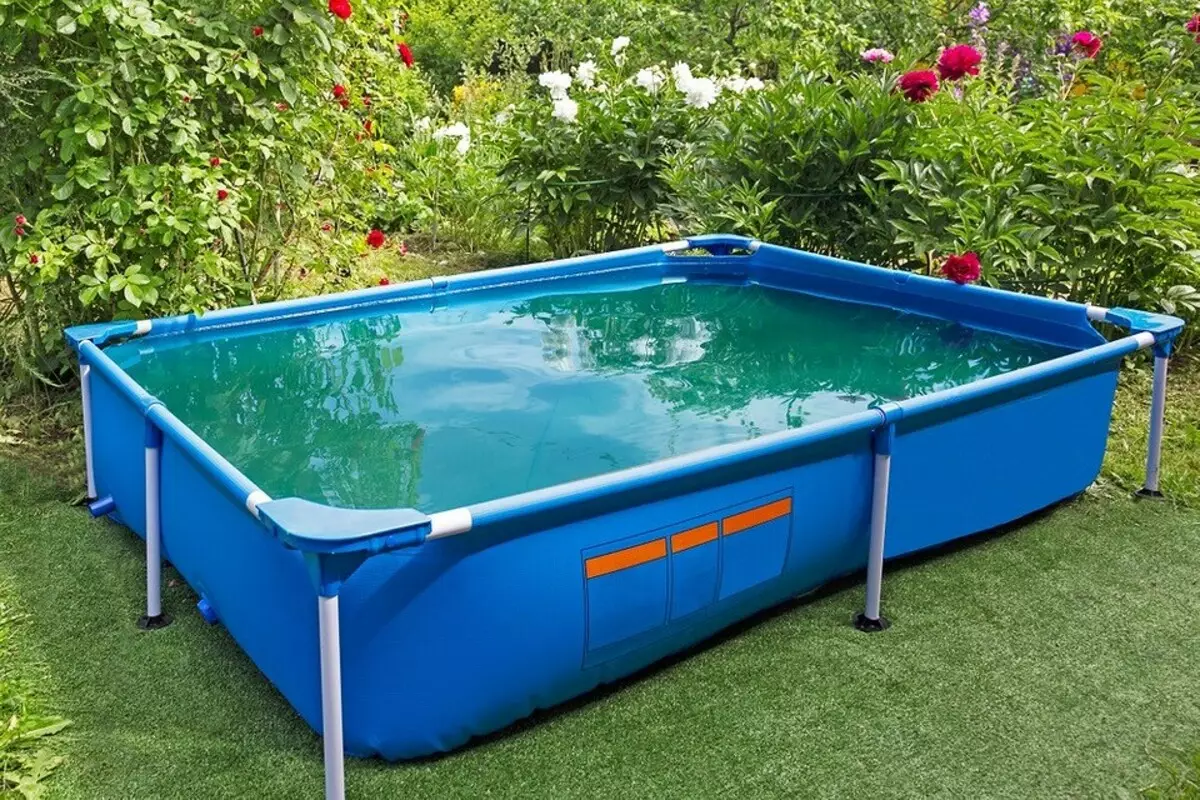
If you stopped on chlorine or complex preparations, be sure to follow the hydrogen indicator (pH level); Fortunately, lactium paper and more accurate measuring instruments began in specialized stores. If the acidity of water turns out to be higher than the norm (and as chlorine adds it increases), chlorine will lose efficiency. In this case, the pH regulator and means for removing the associated chlorine are required. In addition, it is desirable to partially replace water. When interacting with water, chlorine gradually passes into a bound state and loses disinfectant properties (while water remains eating and emanates a sharp smell). Dechlorizers (Akvadechlor, etc.) come to the rescue.
Compared to chlorine, oxygen-containing disinfectors ("Oxyteste", Baylosoft, Bajorokok) are safer and environmentally friendly. In addition, their effectiveness is almost independent of the hydrogen indicator. However, these substances are 1.5-2 times more expensive chlorine and, unlike the latter, do not possess a prolonged action.
For long departures, do not forget to cover the pool with a film covering to slow down the development of algae, pollution and evaporation of water. And besides, significantly increase the intensity of its heating
In the heat, in addition to the disinfector, it is desirable to add algicide once a week once a week - a moderately toxic agent for the destruction of aquatic plants, to which chlorine and oxygen, is only an inner action. After adding algicide in the pool, it is impossible to swim about a day. It is much easier to prevent strong pollution than, once violating the schedule for preventive "procedures," to try to turn a brown-green alive into clean water. If the trouble still happened, it is necessary to fully change the water or carry out the so-called percussion processing, which includes partial (at least one third) of the pool, and the introduction of a multiplely increased amount of disinfect. After that, water purles, and even long-term filtration is not able to return transparency to it.
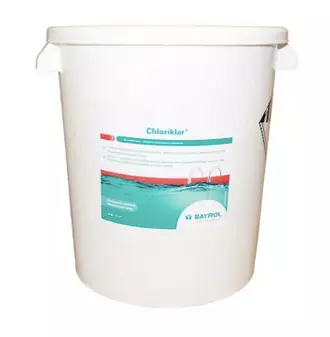
Bayrol Pool Tablets Chloriclar
Flocculants and coagulants ("Flockflock", Ekwital, etc.) are helping to accelerate the cleaning ("Kirflok", "Equital", which glue small weighted particles into larger flakes that are delayed by the filter. In addition to making chemicals, there are other ways to disinfect water - quartzing, ozonation, ionization. However, equipment for such types of processing is oriented mainly on large pools (from 40 m3).
3 Salt Electrolysis
The filtering installation with a chlorineer generator generating chlorine from the usual salt will allow not to spend money on the purchase of disinfectants.
You can purchase such a device worth, fall asleep into the pool the usual table salt from the calculation of about 3 kg per 1 m3 - and forget about buying disinfectors (only to add small portions of salt). Modern models of chlorinerators equipped with electronic sensors independently determine the level of salt in water, the activity of electrodes, etc. When the norm is deviated from the norm, an alarm signal is supplied. It is important to remember: the salt water is very harmful to plants (chlorine traces less dangerous), which complicates the problem of the plum of the pool at the end of the season.
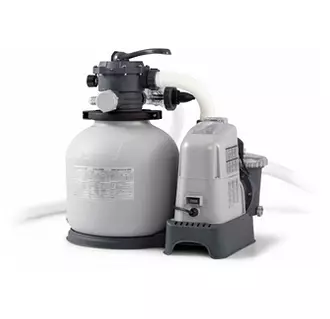
Chlorinerator with Filter Pump Intex 28676
However, the device itself is much more expensive than an ordinary filter, and its service life is 3-6 years: the device may not pay off.
